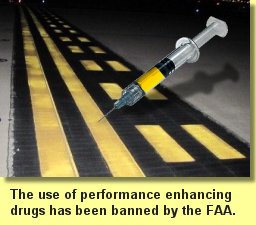 |
 |
The Definition of InsanityBy Mike Speidel
"Insanity is doing the same thing over and over again and expecting different results."
All the way back in the late 20th century, a taxiway centerline was often a single six-inch wide yellow marking and holding position marking lines had the same six-inch dimensions. For airports under FAA jurisdiction, glass beads weren't used until 1996 and black borders weren't required until 1999. Airfield markings were relatively easy to layout and apply. Despite their simplicity, markings were often applied poorly with the introduction of safety features such as glass beads and black contrast. Fast forward to the year 2011, and the painted landscape has changed dramatically:
These days markings are more intricate than ever before; designed to create the safest marking system to date. Enhanced taxiway centerlines, holding position markings and surface painted signs are examples of newly developed, detail-rich designs being installed on airfields across the nation. The new configurations were implemented because the existing perception was markings needed to be improved; and there's the rub. What utility do more elaborate markings serve when they are poorly applied? The root of the issue was never a flaw in marking design, rather it was/is the application of the markings that is inadequate. The initiatives to enhance markings and therefore safety are admirable, however, if the resulting end product remains poor, the efforts are futile. Historically and presently applicators rely solely on second-hand experience from their predecessors - and we're still making the same old mistakes - only now the markings are exponentially more elaborate. The theory that enhanced markings leads to enhanced safety may be apt, but without addressing the root of the issue, markings will continue to be attributed to incidents. Our airfield painters need education for application, now more than ever. Sightline's Airfield Marking Symposiums offer the only how-to training in the world - not attending would be insane! |

 In the recent past, governing agencies have placed greater emphasis on airfield markings and how
they relate to safety. Their importance in the quest for constant, consistent situational awareness is well
documented and well founded. However, while resulting changes to marking policy may be well intended, the new
directives don't necessarily treat the root of the issue.
In the recent past, governing agencies have placed greater emphasis on airfield markings and how
they relate to safety. Their importance in the quest for constant, consistent situational awareness is well
documented and well founded. However, while resulting changes to marking policy may be well intended, the new
directives don't necessarily treat the root of the issue.